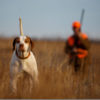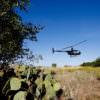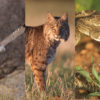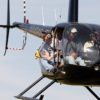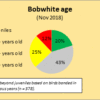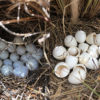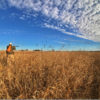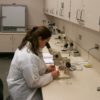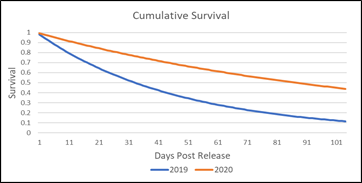
by John Palarski
Since release on March 14th, our birds are faring much better than in 2019. We are actively monitoring 39 individuals. We have documented 52 mortalities (mostly mammalian). There appears to be no difference in survival between source populations (south TX vs. west Tx). Reproduction has been strong—we have located 40 nests (n= 22 STX, n= 18 RP). Nest success has been well above average (48%) and we have documented 16 hatches. We are actively monitoring 7 nests. Site fidelity has been “good”; we have observed only 19 individuals disperse off site and not return.
We wrapped up our spring whistle counts about 3 weeks ago. This year, we averaged 1.5 roosters/stop, which is much higher than our 2019 estimate (0.44 roosters/stop). In October 2020, we will conduct fall covey counts and expect to see an increase from previous years.
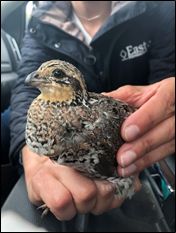 Findings from this study will be used to inform quail managers on best management practices for reintroducing wild bobwhites. We will continue to evaluate effects of source population (west vs. south Texas) on survival, dispersal, and reproduction post-translocation. Strategically, Quahadi Ranch serves as great reintroduction location as we seek to reestablish bobwhite populations further eastward in Texas.
Findings from this study will be used to inform quail managers on best management practices for reintroducing wild bobwhites. We will continue to evaluate effects of source population (west vs. south Texas) on survival, dispersal, and reproduction post-translocation. Strategically, Quahadi Ranch serves as great reintroduction location as we seek to reestablish bobwhite populations further eastward in Texas.
Restoring bobwhites to former ranges is no easy task. It takes a large, collaborative effort to do so. We could not attempt this without the help of many individuals and organizations. We thank Bass Pro Shops, Park Cities and Cross Timbers Chapters of Quail Coalition, Quahadi Ranch, Jim and Barbara Salter, East Foundation, the Rolling Plains Quail Research Foundation, and Tarleton State Wildlife, Sustainability, and Ecosystem Sciences Department for facilitating this project. We also thank John McLaughlin (TPWD), Becky Ruzicka (RPQRR), and Daniel King (RPQRR) for their advice and insight. Technicians Kelli Bashaw, Elizabeth Brogan, Molly Koeck, Cody Carter, and Brandon Consalus provided skilled support during trapping and surveillance tasks. Lastly, we thank all our “Quail Donors” for allowing us to trap on their property to gather birds for this effort.


